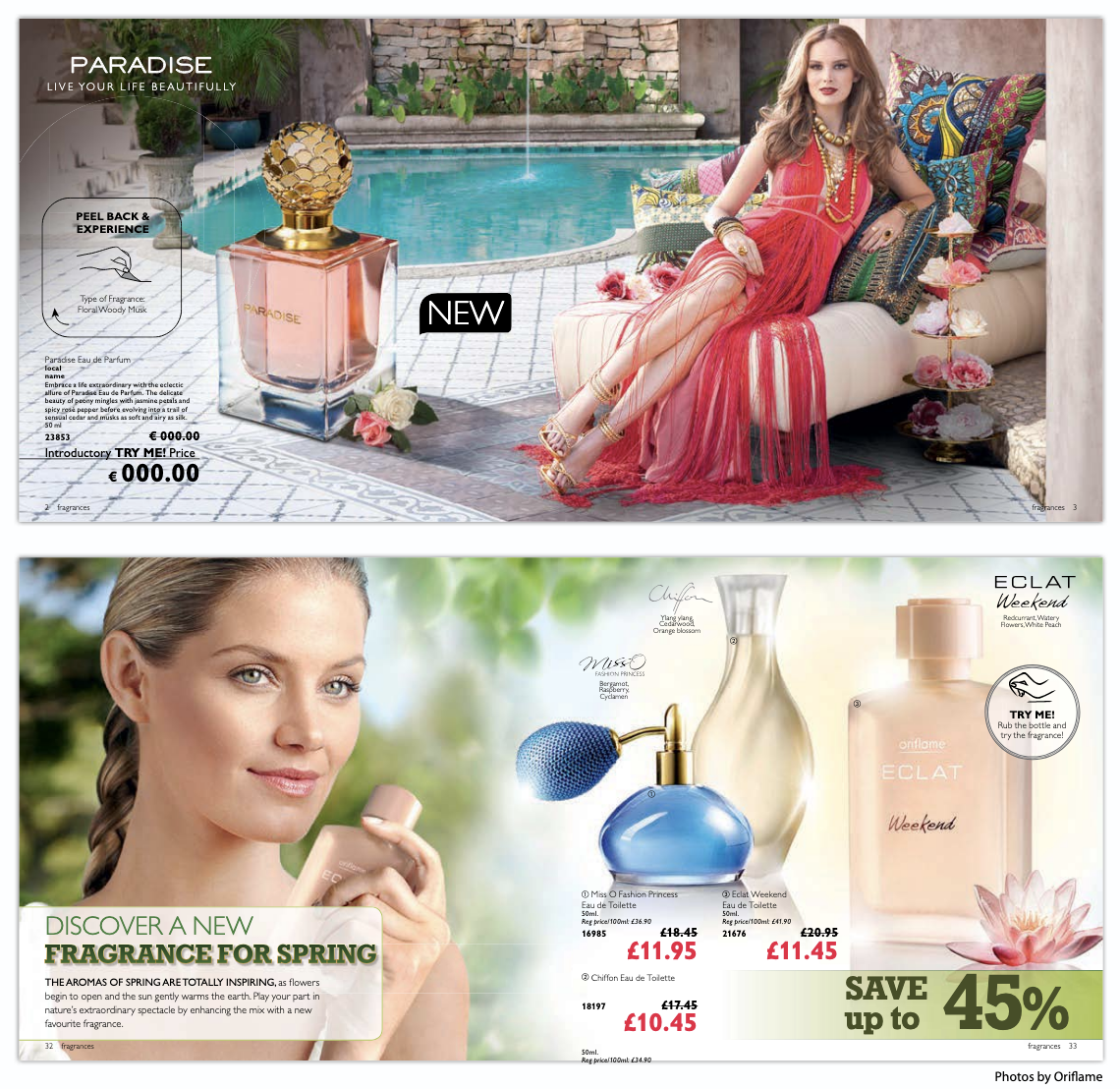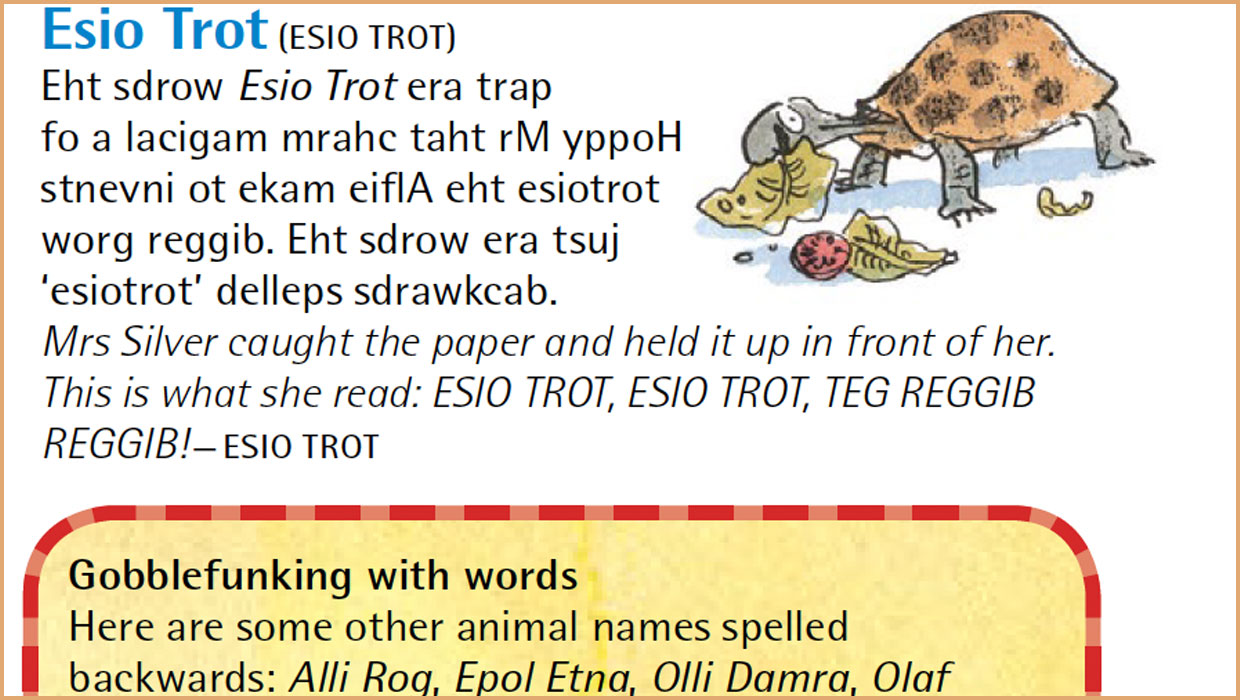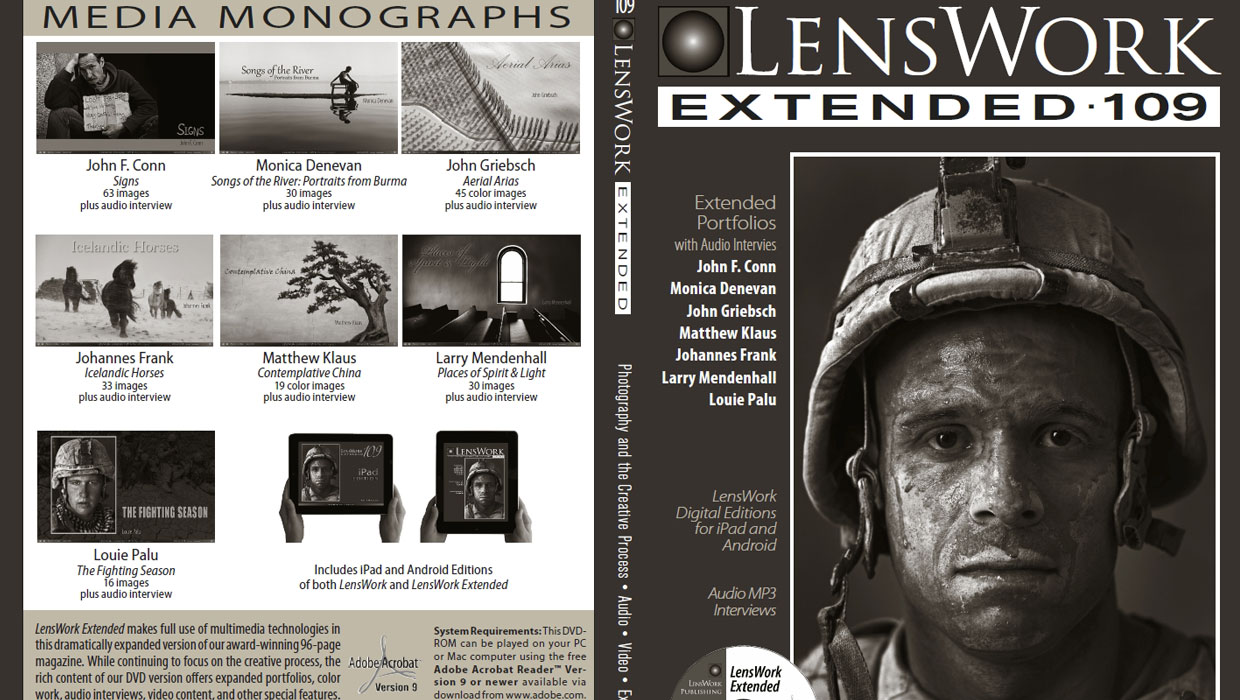InDesigner: Oriflame
Can you imagine having to create 40 different versions of a catalog every three weeks? Pam Pfiffner learns how the folks at Oriflame get the job done.

This article appears in Issue 50 of InDesign Magazine.
Imagine that you have to create a 136-page catalogue in 40 different languages for 60 worldwide markets, many of which use different currencies and have different prices. Imagine producing a unique PDF for each version. Imagine that each issue of the catalogue requires fresh creative content. Okay, now imagine doing all of the above every three weeks. That’s what the catalogue creation and production teams at the beauty company Oriflame do.

Founded in Sweden in 1967, Oriflame is a beauty company selling direct to customers, similar to Avon or Mary Kay in the United States. Customers buy cosmetics, skin care, personal and hair care, accessories, fragrance and wellness products through a network of around 3.5 million Oriflame Consultants in such far-flung places as Mongolia, Kenya, Turkmenistan, Indonesia, Peru, and Vietnam, as well as Europe (but not the United States). There are no stores or retail outlets. Instead, customers learn about Oriflame products mainly through the catalogue in print and online. At Oriflame, the catalogue serves as both the store and the front window, as well as the campaign material for the Oriflame Consultants. Therefore, the catalogue’s layout must be clear and compelling. The imagery must be beautiful and alluring. The text must be informative, accurate, and easily translated. And with a new catalogue released every third week, it must avoid stagnating. Each catalogue must feel fresh and new to customers.
“What’s unique about Oriflame is that we have to balance the complexity of supporting multiple languages and accurate product data within a high-production environment while allowing our design team complete creative freedom ,” says Alfred Mosskin, the Process Expert for Catalogue Development at Oriflame. Throw in out-of-the-ordinary stuff like ‘scratch-and-sniff’ elements, eye-catching varnishes, striking cover effects and gate-fold features, and our catalogues can be quite challenging to produce.”

Each document contains a base graphics layer and a master text layer, identified by blue and red outlines respectively.
But the design and production departments at Oriflame have developed systems that help them produce these catalogues quickly and efficiently, thanks to having InDesign as the layout platform for the creative team and InDesign Server behind the scenes to support production in cases where content can be structured and automated. “Some years ago we switched from QuarkXPress to InDesign,” Mosskin says. “That was a major project, but the change has proved really valuable both from the production perspective and from the creative perspective. Now designers have a more extensive palette of effects to use natively in the layout, such as shadows, glows, blend modes, and so on.”

Designers use InDesign layers to facilitate the creation of catalogues in multiple languages, as this palette shows.
The process starts with page templates that establish the number of products and their placement on the page. For example, a designer might get the directive to create a spread that has the capacity for 15 products as well as imagery to underscore the products’ benefits. The layout is adjusted to fit the number of products needed on the same page. A page featuring only one or two products gives the designer leeway to fill the page with beautiful images of models and product packaging, for instance. Still, each design must be flexible enough to adapt and accommodate the translations of 40 languages, including text that reads right-to-left.
“We have an open file system where all docs follow a strict naming convention,” says Mosskin. “This allows both users and the InDesign Server to locate the right document, create the new language layers, replace the master texts with all the correct translations, export the correct layer combinations per market, and so on.”

Designs must be flexible enough to work with right-to-left reading languages such as Arabic. Because these catalogues are read back-to-front, pages and page elements are flipped to closely follow the design of left-reading languages.
InDesign layers are integral to the design and production of Oriflame’s catalogues. Each document has an underlying graphic layer as the base layout in each version, although tweaks are made when necessary to customize content for a product that’s featured in a single market. On top of that rests a master text layer, containing all items destined for translation. It is from this two-layered base file that all iterations of that page are made. After the text is translated, each document also contains a layer for every language, so a single document may contain 20 layers that correspond to Latvian, Russian, Greek, and Georgian, for example. “The people in charge of text layouts and translations are constantly switching between languages. Hundreds of times per day.” Mosskin says. Scripts that provide keystroke mapping are invaluable for translators.

The art directors can access the Photoshop layers created by the image retouching team by using them as object layers in InDesign.
Yet within this structured environment, creative freedom is paramount. Given the frequency of production, Oriflame wants to present its clientele with fresh looks in each catalogue. An in-house retouching department uses Photoshop to ensure the photographs are flawless, create beautiful merged imagery, and apply effects. “We use a lot of them, to add extra sparkle in the model’s eyes or shine on the glass bottles or put more intense light on the graphics,” Mosskin says. “I think the most common request from the art directors to the image retouchers is ‘Great! Just add a couple of more ‘blings.’”
The creative designers use InDesign for effects that are possible to add in the layout. “We try to use the effects within InDesign as much as possible,” Mosskin says. “On simpler images we’ll add drop shadows and transparency within InDesign.” More complex effects are applied in Photoshop on separate layers and saved as .psd files that can be controlled as object layers in InDesign. As a result, the creative work relies on good communication and cooperation between the retouchers using Photoshop and the art directors and layout artists working in InDesign.
With such complex systems it’s somewhat surprising that for many markets, Oriflame uses InDesign CS3 for the catalogues’ design and production. But it’s because of that complexity that Oriflame has not yet migrated to a more recent version of InDesign. “We are planning to upgrade in the near future but the desktop upgrade is linked to upgrades of other systems that manage the InDesign servers and also to the systems handling all texts and language translations. These all need to be upgraded at the same time and in a controlled way so as to not disturb the production,” Mosskin says.

Layouts such as these show how Oriflame uses both data-driven and freeform creative content in it catalogue pages. The first layout above is a more structured page. “We call them ‘crowded pages,’” Mosskin says. “They are quite challenging to create as there are so many elements to fit on the page.” The second layout shows how creative content works within the context of an architected page. The remaining layouts at right are examples of the creative freedom granted to designers.
However, Mosskin admits that he’s indeed looking forward to features of InDesign CS6. “The native support in CS6 for Arabic and right-to-left orientation with the World Ready Composer is very interesting,” he says. He’s also enthusiastic to catch up with features found in CS4 to 5.5, such as multiple page sizes and orientations in a document and auto-sizing of text frames as well as “Smart Guides, live preflight, the improved link panel, GREP styles, Mini Bridge, and so on.”
Oriflame catalogues also appear online, as Flash catalogues, on tablet devices and on smartphones. A separate online department converts the catalogue to a web version and adds dynamic elements, making sure all products on each spread are displayed next to the page and clickable as the customer flips through the catalogue.
Mosskin says that today the iPad app is based on PDFs but the next step is to export to tablet directly from InDesign, which will allow new features and ways of interaction. But producing content for tablet devices presents another level of complexity to a multifaceted system. It also demands new ways of working for the creative teams, when they need to create designs that work not only for print but for the tablet devices as well.
Given its ability to juggle so many demands simultaneously and efficiently, it seems that the team at Oriflame is up to the challenge.

Oriflame catalogues are translated into 40 languages, including : Bulgarian, Czech, Dutch, Finnish, Hungarian, Polish, and Spanish. Above is the Greek version of the catalogue.

An additional complication to a catalogue is the inclusion of “scratch-and-sniff” elements that let customers experience the scent of a perfume in a print environment. Two types are shown here: the first has a patch of scent applied to the inside of a plastic label that the customer lifts to smell; the second utilizes a special print varnish that has encapsulated the scent. This is then included in the design, much like an invisible spot color. When read it lets the customer scratch on the product on the page with a finger to release the scent. The design team works with the production team to ensure the scented elements are placed correctly.
Commenting is easier and faster when you're logged in!
Recommended for you

InDesigner: Roald Dahl Dictionary
Kelly McCathran shares the story behind a wonderful, whimsical dictionary for th...

InDesigner: LensWork
A look at LensWork, a magazine devoted to black and white photography, is produc...

InDesigners: Sesame Workshop
The creatives behind Sesame Street and many other shows for kids talk to David B...




